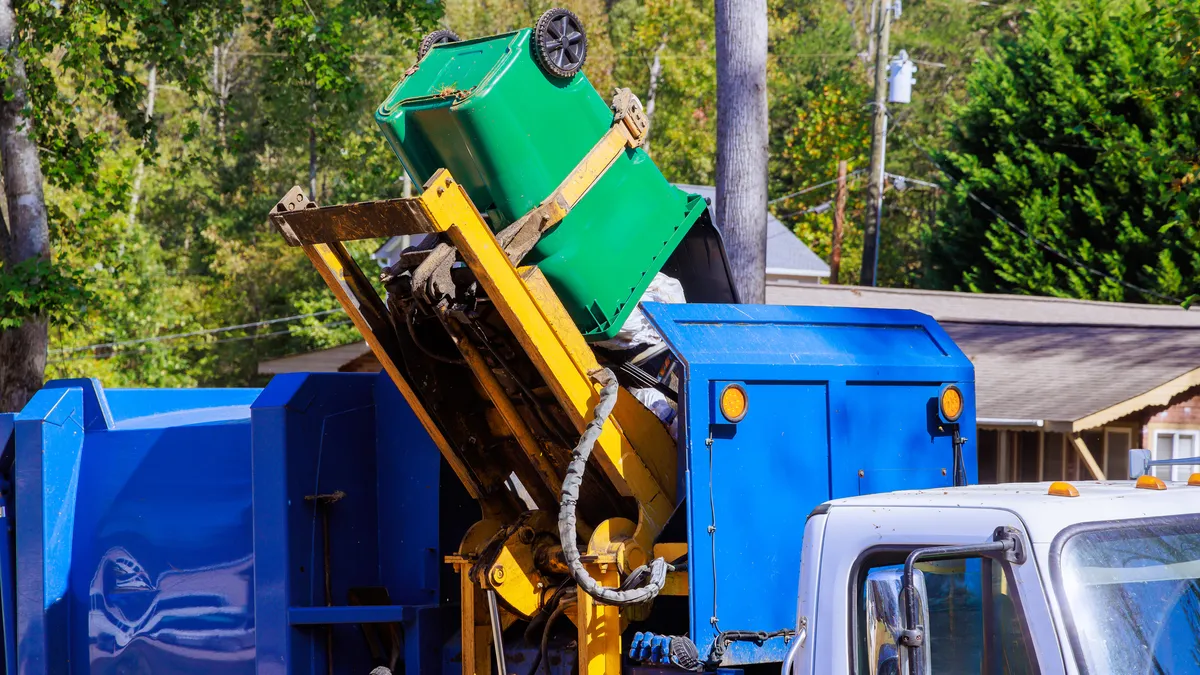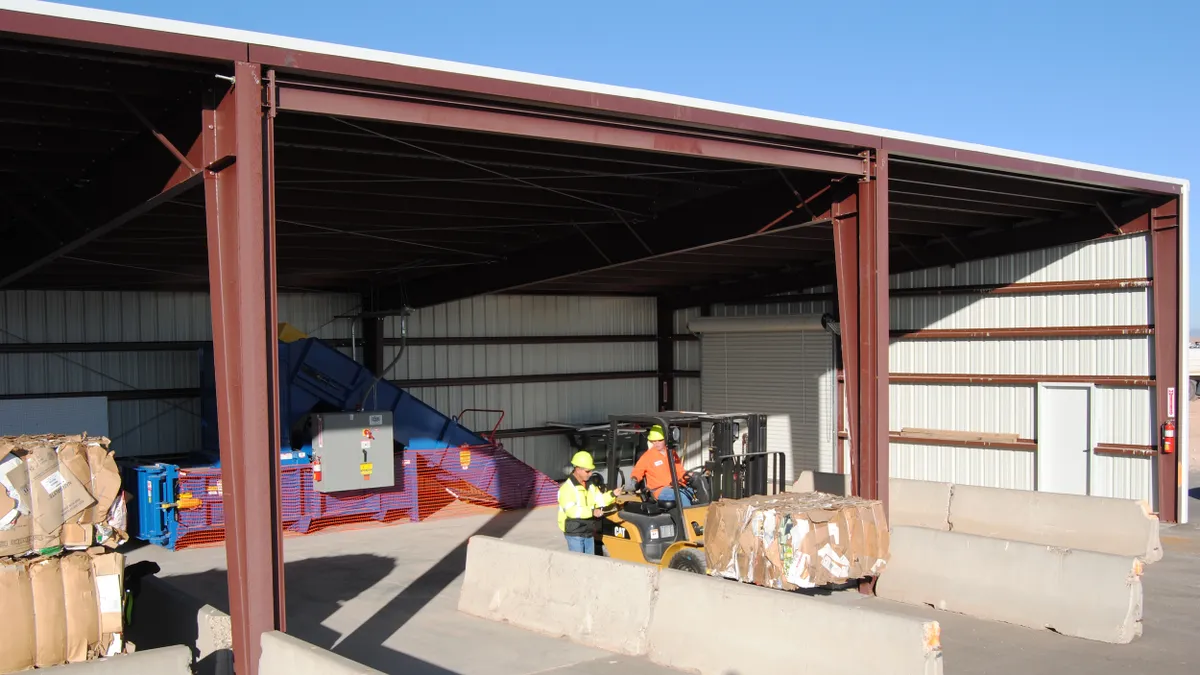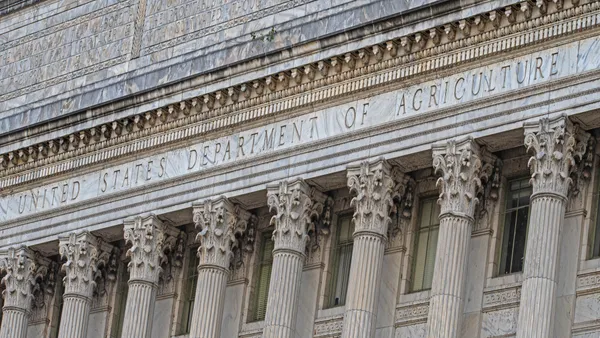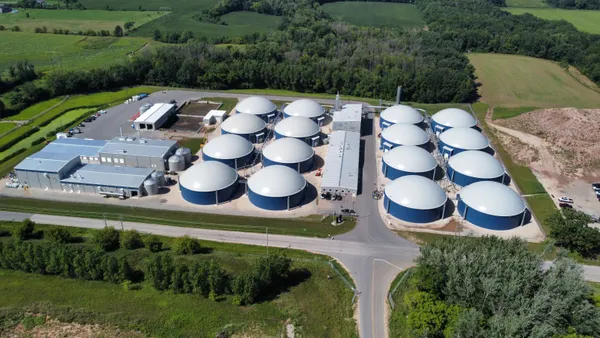Dive Brief:
- U.S. EPA Administrator Michael Regan announced the Draft National Strategy for Reducing Food Loss and Waste and Recycling Organics on Saturday at COP28, the annual climate conference.
- The strategy takes a "whole-of-government" approach to improve circularity for organics, pulling together research and existing funding opportunities from the EPA, U.S. Department of Agriculture and Food and Drug Administration. It’s designed to help the agenices meet their joint goal of reducing food loss and waste 50% by 2030.
- The Biden-Harris administration plans to make use of existing programs that have already begun doling out resources for organics infrastructure like the Solid Waste Infrastructure for Recycling Grant Program and Recycling Education and Outreach Grant Program. Other programs, like the USDA's Composting and Food Waste Reduction, will also be harnessed for the strategy's objectives.
Dive Insight:
Federal agencies have been working toward their 50% food waste reduction goal since 2015. In recent years, the Biden administration has continued that work by building up a body of research on the harms of landfilled organics and the benefits that come from rerouting food from loss and disposal.
In October, the agency released a study finding that 58% of methane emissions from landfills come from organics, including yard and food waste. It determined that most of those emissions occur in the first few years organics are landfilled, often before gas capture systems are installed. The issue of landfilled food is also growing — the EPA found that 62.5 million tons of food was landfilled in 2020, double the total in 1990.
Meanwhile, the administration released a National Strategy on Hunger, Nutrition, and Health last year that included a goal to reduce barriers to food recovery. The strategy cited USDA research finding that one-third of all food in the U.S. goes uneaten and set deliverables to reduce that waste, including the development of the food loss strategy.
The new food loss strategy’s objectives are to prevent the loss of food where possible, prevent the waste of food where possible, increase the recycling rate for all organic waste and support policies that incentivize and encourage food loss and waste prevention and organics recycling.
"Reducing food loss and waste is one of the most impactful actions we can take to reduce climate pollution and build a circular economy," EPA Administrator Michael Regan said in a statement. "Working together with our partners at USDA and FDA, we will take actions to significantly reduce waste and the pollution that comes with it while improving our food system and boosting the economy."
The strategy notes that current organics recycling infrastructure nationwide is insufficient to address the issue of waste, and endorses the use of funding from programs like EPA’s SWIFR grant program, funded by the Bipartisan Infrastructure Law, to improve that infrastructure. The strategy also makes special mention of the need to build out such infrastructure in historically disadvantaged communities, noting that grant funding should go to such projects as part of the administration’s Justice40 initiatives. The agencies also committed to researching barriers to decentralized community composting.
The agencies also plan to continue supporting anaerobic digestion via grants and loans to agricultural producers, water resource recovery facilities and municipalities. Programs that fund such projects include the USDA’s Rural Energy for America Program, which provides both loan guarantees and grants to agricultural producers and rural small businesses, and EPA’s AgSTAR program.
The USDA also plans to invest $30 million over the next three years into its Composting and Food Waste Reduction cooperative agreement program, which helps local governments and private sector partners develop municipal compost plans and/or food waste reduction plans, per the strategy.
The strategy also includes a suite of research and data measures the administration plans to take to track the issue and report on progress. Among those measures are the development of a “decision support tool” to help local governments identify appropriate circular solutions and a newly announced strategy to better monitor landfill methane emissions. The food loss strategy also noted the recent launch of the USDA's Center for Research, Behavioral Economics, and Extension on Food, Loss and Waste center, a $1.5 million research program to "address inefficiencies in the food system.”
The food loss strategy also noted the agencies' ongoing work with food waste nonprofit ReFED, which announced its own national pact this week with grocers, food manufacturers and others to track their food loss and waste data.
Moving forward, data and measurements will be reported in the administration’s annual Report on the Environment, which the strategy’s authors hope will allow agencies to “become proactive rather than reactive” in addressing the issue.
The 30 day public comment period for the strategy ends on Jan. 4. The administration plans to address those comments and begin implementing the strategy in 2024.














